This weekend, Boneyard Arts Festival will take over locations across Champaign County. The pop up art exhibitions, performances, and creative interventions will be hard to miss. Next week, Ebertfest will take place at the Virginia Theater, and film fans will patiently wait in line on Park Avenue to take in this year’s offerings.
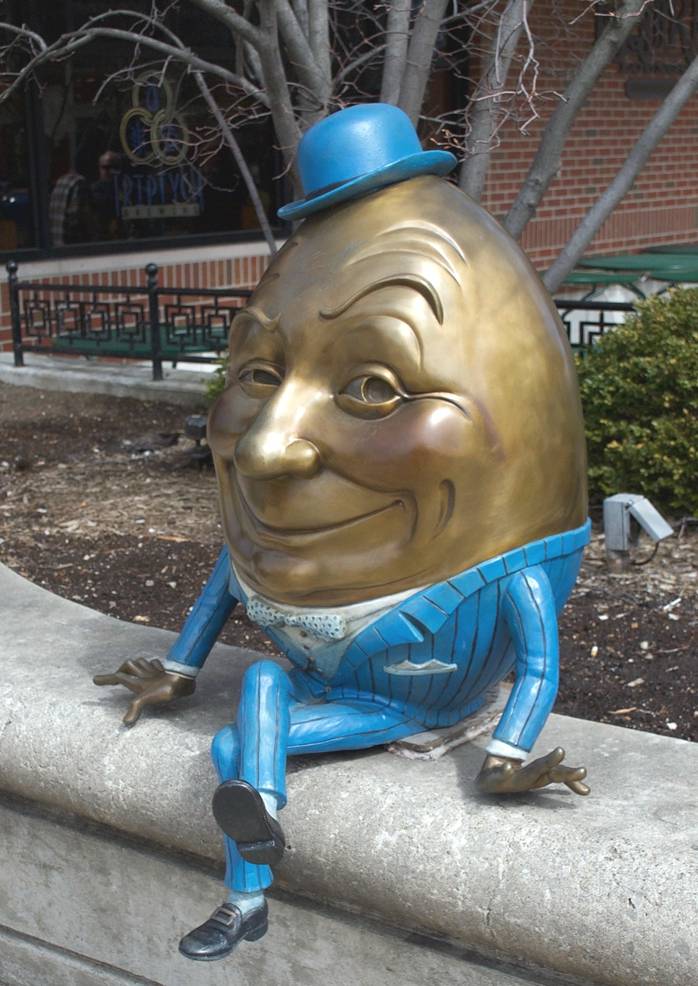 We are not lacking creativity in this community — you only need to browse our Arts section to see that there are things happening, and plenty of engaged people making things happen. What we are lacking is a robust commitment to public arts — that is, art that is for public consumption. The history of art and museums is one of patronage and exclusivity, and while many museums are open to the general public, there are a variety of social, cultural, and economic barriers in place limiting who gets in. We’re talking about art that exists in public spaces, even if it isn’t necessarily on public land.
We are not lacking creativity in this community — you only need to browse our Arts section to see that there are things happening, and plenty of engaged people making things happen. What we are lacking is a robust commitment to public arts — that is, art that is for public consumption. The history of art and museums is one of patronage and exclusivity, and while many museums are open to the general public, there are a variety of social, cultural, and economic barriers in place limiting who gets in. We’re talking about art that exists in public spaces, even if it isn’t necessarily on public land.
There are some local organizations that try to celebrate, support, and promote the arts; arguably the most successful is 40 North. This super small non-profit organization has done incredible things with virtually no money — Boneyard Arts Festival and Friday Night Live are two of the larger events — and is essentially in existence because there is a community of people (led by Executive Director Kelly White) who give their time, money, blood, sweat, and tears to make things happen.
We feel that Champaign-Urbana could use a little oomph in regard to committing to fully embracing and celebrating our creative communities, and making (money) moves to enhance our public spaces with some more visual art. It’s not to say that there aren’t great examples of public art in our community — just look at Urbana Park District’s Meadowbrook Park and 40 North’s programs.
But we can do better.
We believe that we are not fully showcasing the vibrancy and character of this place, this crossroads of cultural exchange. Great civilizations are marked by the arts they create: non-functional, functional, architecture, music, theater. Public art engages the community in new, exciting, and different ways. It has the potential to signal to the community and to outsiders that this place is interesting, it’s engaging, and it’s willing to think “outside of ordinary,” as Visit Champaign County puts it.
We’d love to see Champaign-Urbana realize more public art in the form of murals and sculptures, creative interventions with the environment (built or natural), and through the sustaining of visual art spaces.
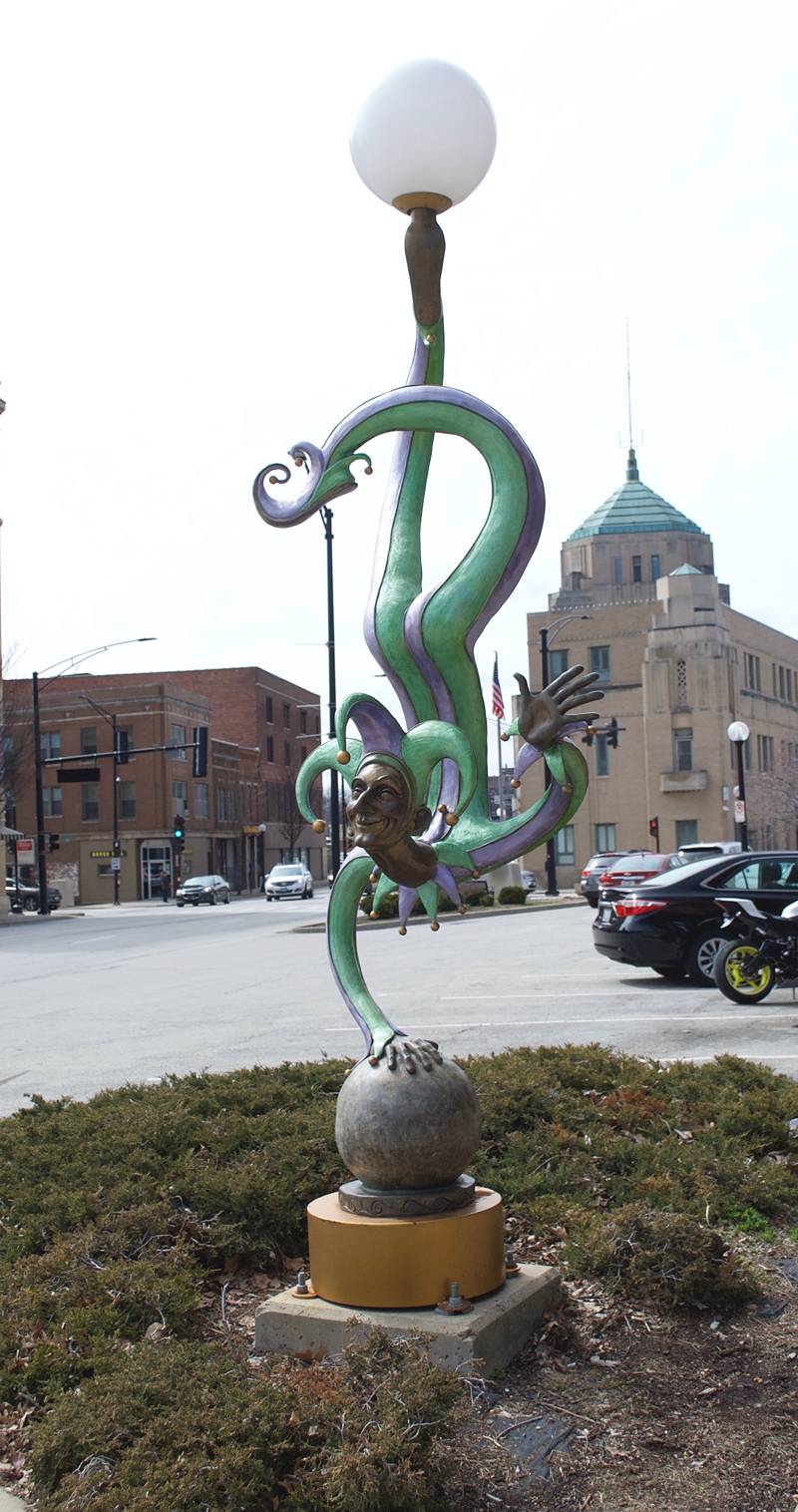
There is something to be said about quality over quantity. Sure, there are plenty of sculptures around Downtown Champaign. But are any of them particularly interesting? Compelling? Beautiful, even? Are they even being made by local artists? No, not really, on all counts. Sure, everyone has a good drunken laugh at and with Mr. Eggwards, but that thing is hideous. The jester lamppost outside of Seven Saints? It’s embarrassing. That weird hot dog next to the terminal? Hard pass. Most of those sculptures aren’t even made by people who live in Champaign-Urbana — and more importantly, they are all objects of no significance to or for to C-U. We can do so much better than what we have, and we can commission local artists to make things. These things don’t even need to be permanent — in fact, some ephemeral creative interventions are welcome.
Urbana Park District’s Meadowbrook Park is a successful example of showcasing public art works. While acknowledging that it’s not an exact comparison (UPD is not a municipality), there are certainly practices that can be learned and replicated elsewhere. Organized around the principle of “Man + Nature + Art,” UPD spends $10,000 to $12,000 per year on acquiring and maintaining artwork in the park (a few examples below).
Selections are curated — that is, drawing on their network of professionals and artists, UPD identifies and solicits artworks that have been evaluated by art world experts. Those pieces are placed with careful consideration for and of the natural environment: nothing is placed in the middle of the natural areas, for instance, and mock-ups of the object in the proposed space are done ahead of time to consider how it will look in situ.
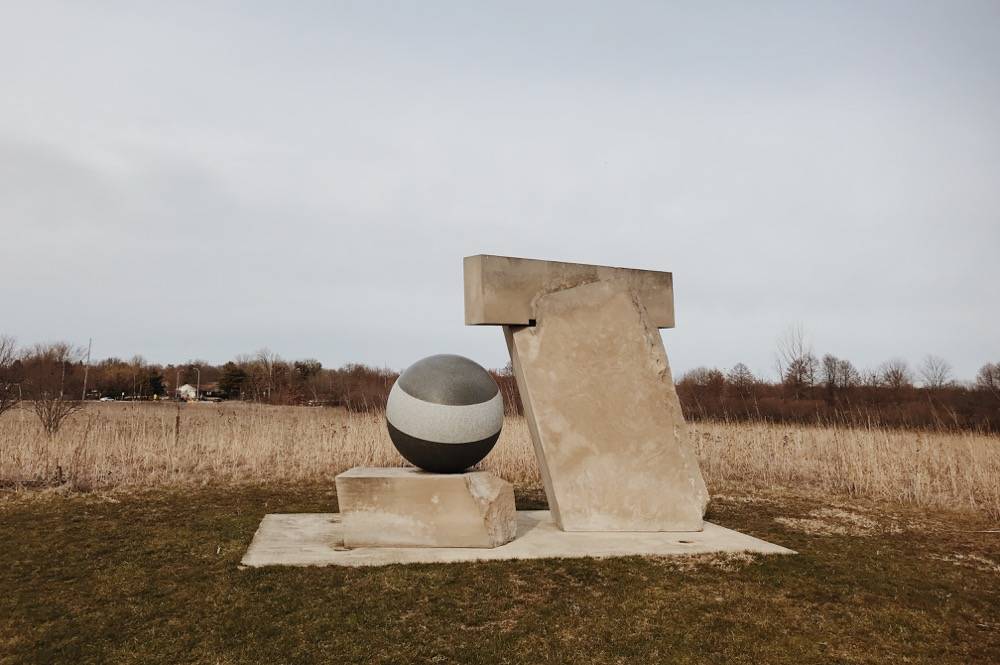
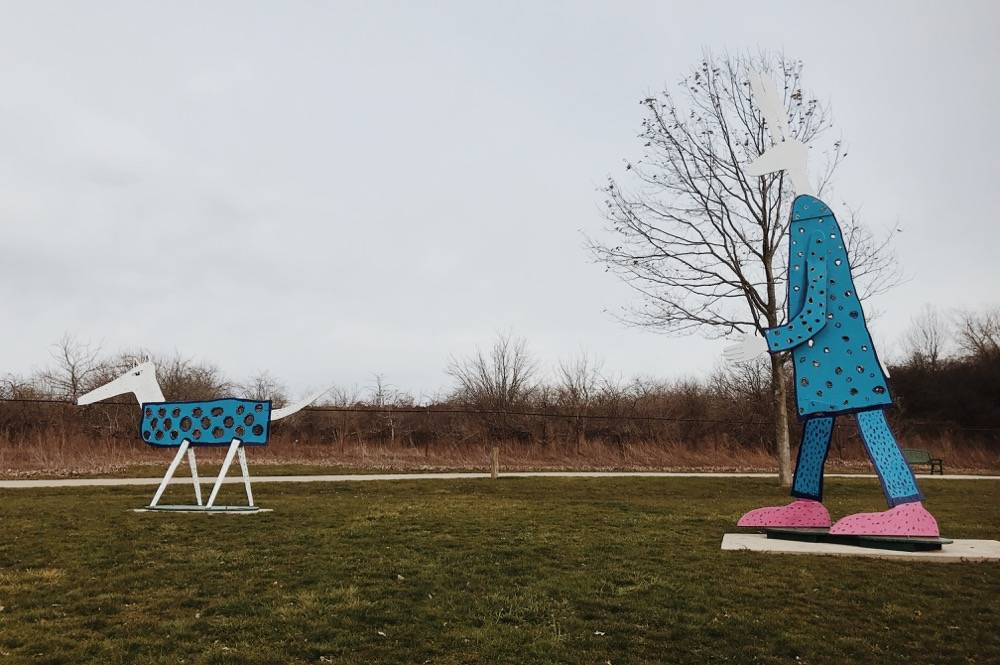
We cannot even seem to solve or agree on issues such as our public schools, public transportation, or racial bias. Those are all very real problems that need some creative and cooperative solutions. Thinking and talking about spending tax money on the arts is off-putting to some for that reason — it seems less important. We posit that in reframing how we think about who we are and what we value as a community can help contribute to those very complicated questions. Allotting a small portion of tax revenue to public art programs isn’t going to make or break whether or not we can pay for our firefighters or improvements to infrastructure. The amount of money it takes to pay for supplies and to pay an artist (yes, artists need to be paid) is insignificant in the fiscal belt-tightening conversation. As little as $50,000 annually would be enough to significantly contribute to adding and changing things. The City of Urbana distributes as much each year through its Public Arts Grants, and for that, we commend them. However, we feel that it is indeed important for both cities to be on board with public arts and to have a line dedicated to that idea. The City of Champaign is twice the size of its neighbor to the east, and plays host to quadruple the amount of commercial enterprise and the buildings that host them.
The cities set the tone for the rest of the community, and it’s essential that our governing bodies do not leave the arts and humanities to corporate overlordship, or relegate the arts to luxury or frivolity. We cannot have corporate money dictating our taste or values. The importance of municipal support of the arts cannot be understated.
However, we are not foolish or stubborn enough to think that there isn’t a place for corporate patronage. For entities doing well, $10,000 or $20,000 is a tiny bit to invest in the community that has continued to support them. For smaller businesses, a building owner can offer up a wall or window for a mural. It’s all around good PR, and you can argue that an interesting or compelling work of art on or near a building or business is actually good for business.
Where can we do better? And why do we want more public art?
To memorialize and commemorate
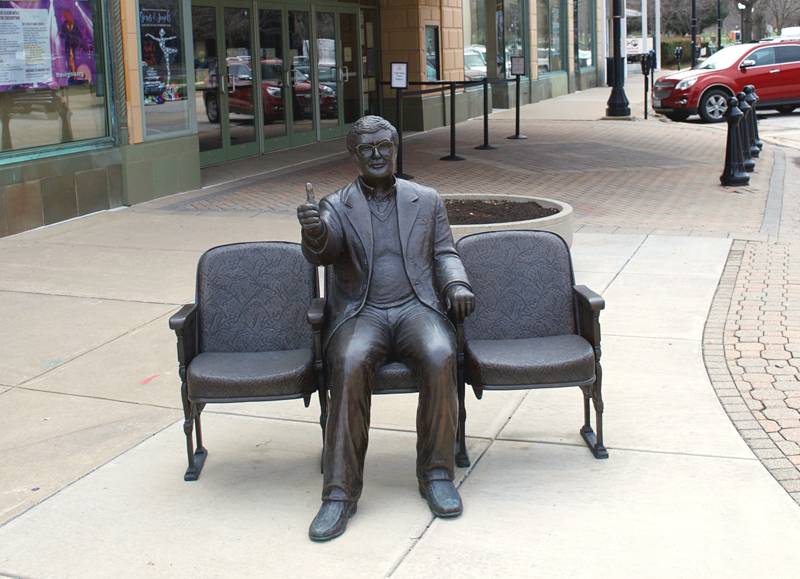
Sculptures, plaques, and other monuments are common examples of public art; these often have a didactic element to them. The Roger Ebert sculpture outside of the Virginia Theater serves the dual purpose of memorializing and commemorating. The sculpture is straightforward — it’s clearly Roger Ebert, thumbs and all — and there are two plaques nearby with short descriptions of the work, the man, and the donors who helped fund the monument. The statue serves the dual purpose of celebrating or commemorating Ebert, and his contributions to Champaign-Urbana, and memorializing him, to acknowledge and make an effort to remember him in perpetuity.
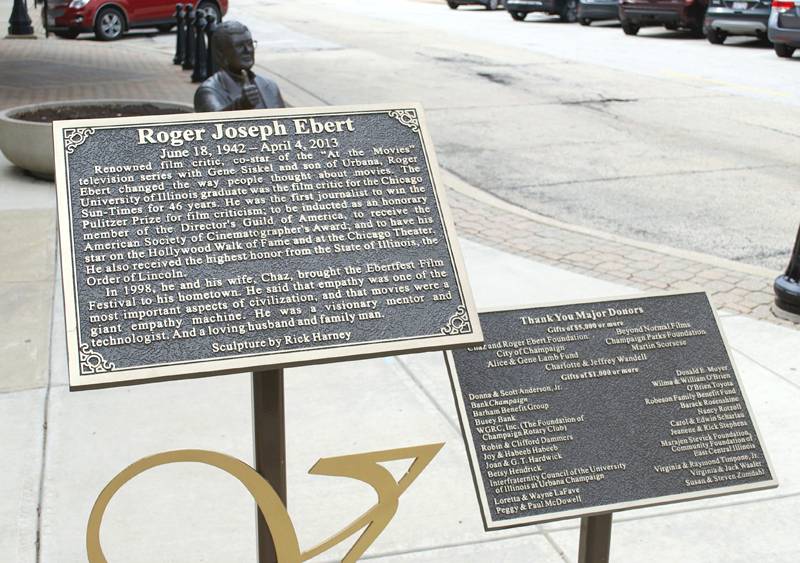
What if we celebrated more local heroes? What if we carved out spaces in our parks and along our sidewalks to celebrate their efforts and achievements? To remember them after they’re gone?
To beautify
Let’s face it: cool and trendy and interesting looking public art makes the town look the same. At the risk of oversimplifying, nice looking things make people happy, or feel welcome. What if there was a mural that was visually interesting enough that you’d see something different on each visit?
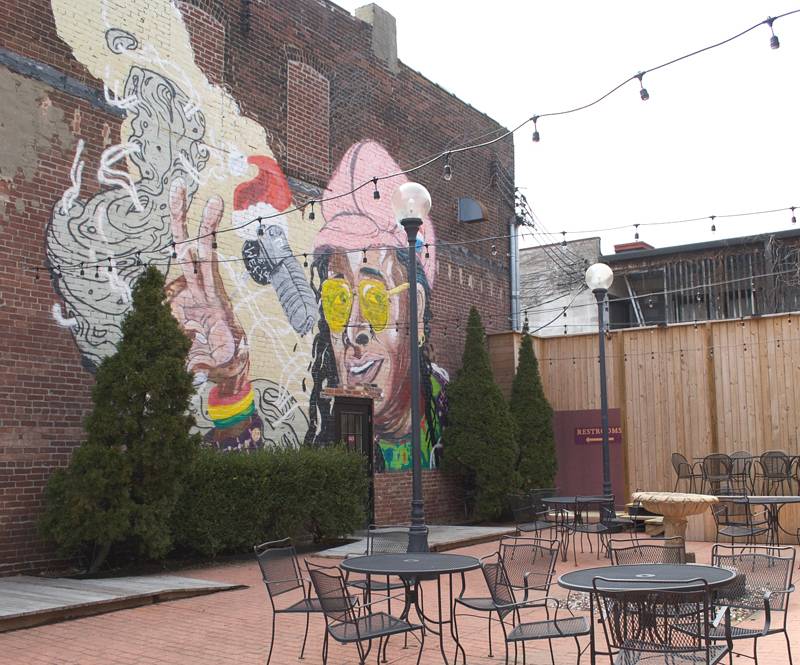
We are sure there are some people who think of murals or graffiti art as too “urban,” or “urban blight.” To those folks we say, you’re wrong. (There’s a very long history of connecting graffiti or street art to black and brown urban poverty and crime as a means to undermine and control the voices and efforts of historically marginalized people.) Sipyard (below) is a wonderful example of this aesthetic put to good use in a meaningful and interesting way. It’s a space that is visually interesting, brings youth and life and energy to an otherwise less interesting downtown area. Most importantly, it is continually added to by the community, and it encourages you to come in, take a look, spend some time.
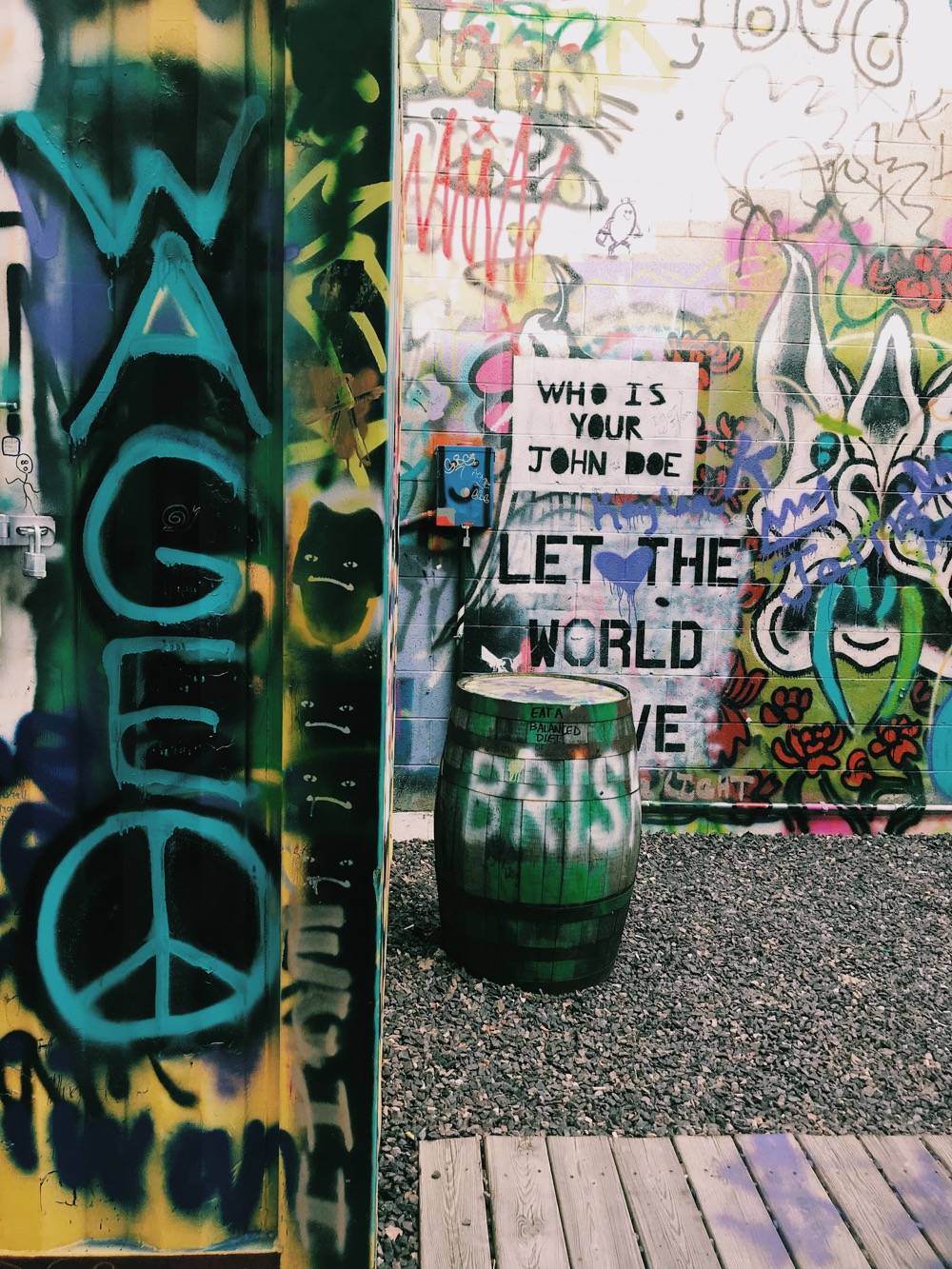
To challenge the community to think differently
This is perhaps the most important aspect of all the arts. All of the buildings and artworks you encounter make you feel a certain way. Think about the way the Latitude building has changed the look and feel of University Avenue. The road feels narrower, you might feel more claustrophobic, more distracted by the giant, brightly lit digital billboard flashing as you wait at the light. Perhaps that makes you anxious.
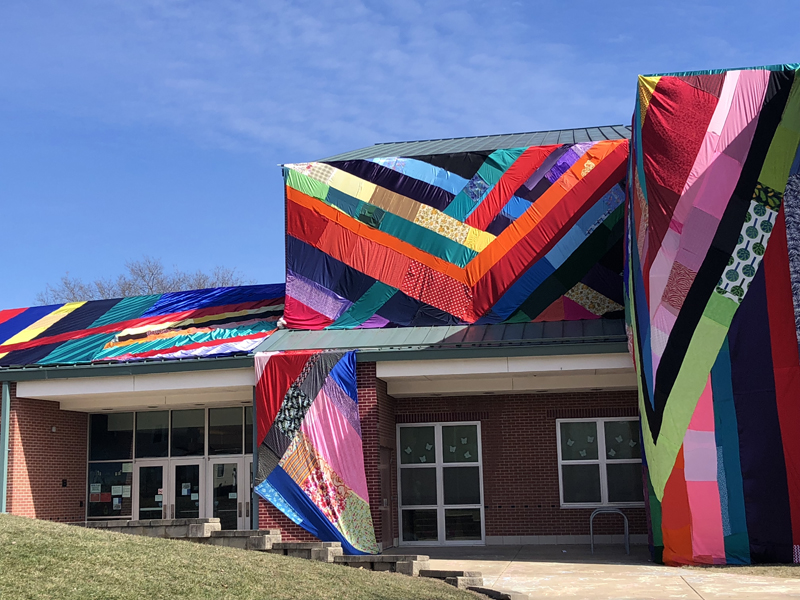
Now, imagine that the digital billboard wasn’t flashing ads for Meijer, and instead it was showing something that made you feel at ease, like a shoreline, or some trees, or a bunch of cats (if that’s your thing). Or, imagine if some space was wrapped in colorful fabric, not unlike the recent intervention at Stratton. Maybe you’d look at that building or that space differently. Maybe, if you encountered a mural or sculpture of a person whose name you didn’t know, you’d look them up. Maybe you’d look up the local artist who made the work of art.
40 North does something similar through their Sky Gallery and MTD Art programs; it’s refreshing to see the work of local artists on billboards and on busses — we think there needs to be more of this sort of thing. Why not offer more municipal funding to 40 North, and have folks who are knowledgeable and dedicated to the arts curate some public art in C-U? Why doesn’t the Public Art League (the folks responsible for many of the sculptures around town) collaborate with 40 North, and invest a portion of its funding into an organization that has the means and wherewithal to dedicate the time and resources to developing public arts in a more comprehensive way?
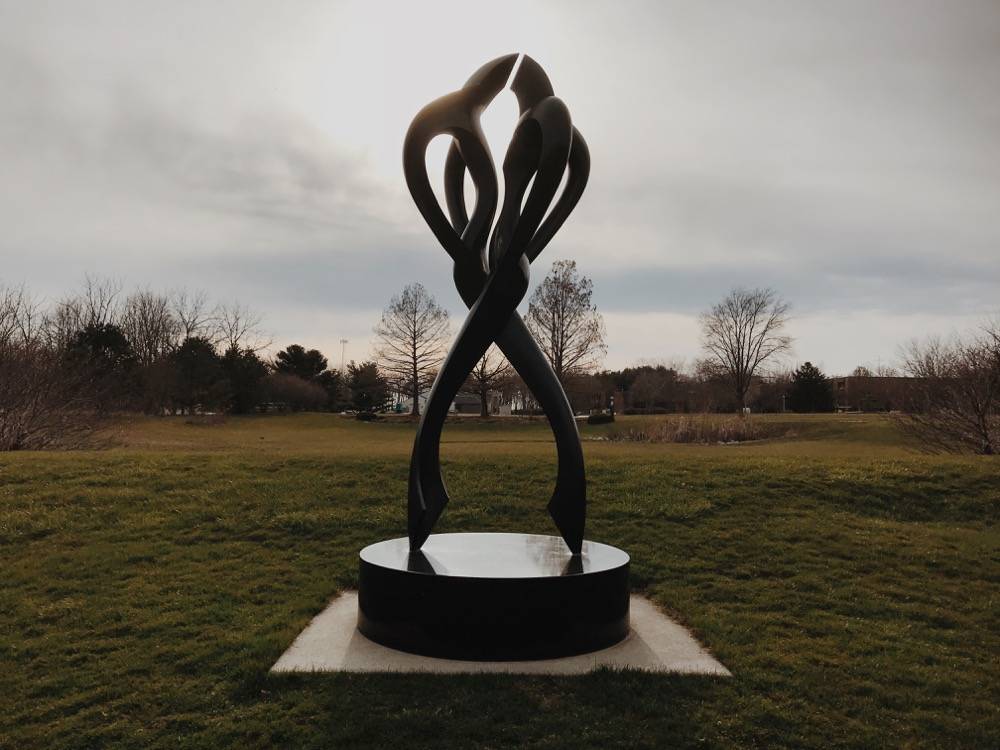
There are plenty of ways we can improve upon the aesthetic and creative engagement of and with Champaign-Urbana. With Champaign and Urbana municipalities leading the charge, we don’t have to settle for uninteresting sculptures or sad, boring, buildings. As the Urbana Park District’s Director of Parks and Recreation Timothy Bartlett stated in reference to Meadowbrook Park, “[UPD] want[s] to help public art be successful; to give it a good home, feature it, and promote it.”
We think that’s a great idea.
Smile Politely’s Editorial Board is Jessica Hammie, Julie McClure, Patrick Singer, and Seth Fein.
Photos by Jessica Hammie, Julie McClure, and Patrick Singer.








